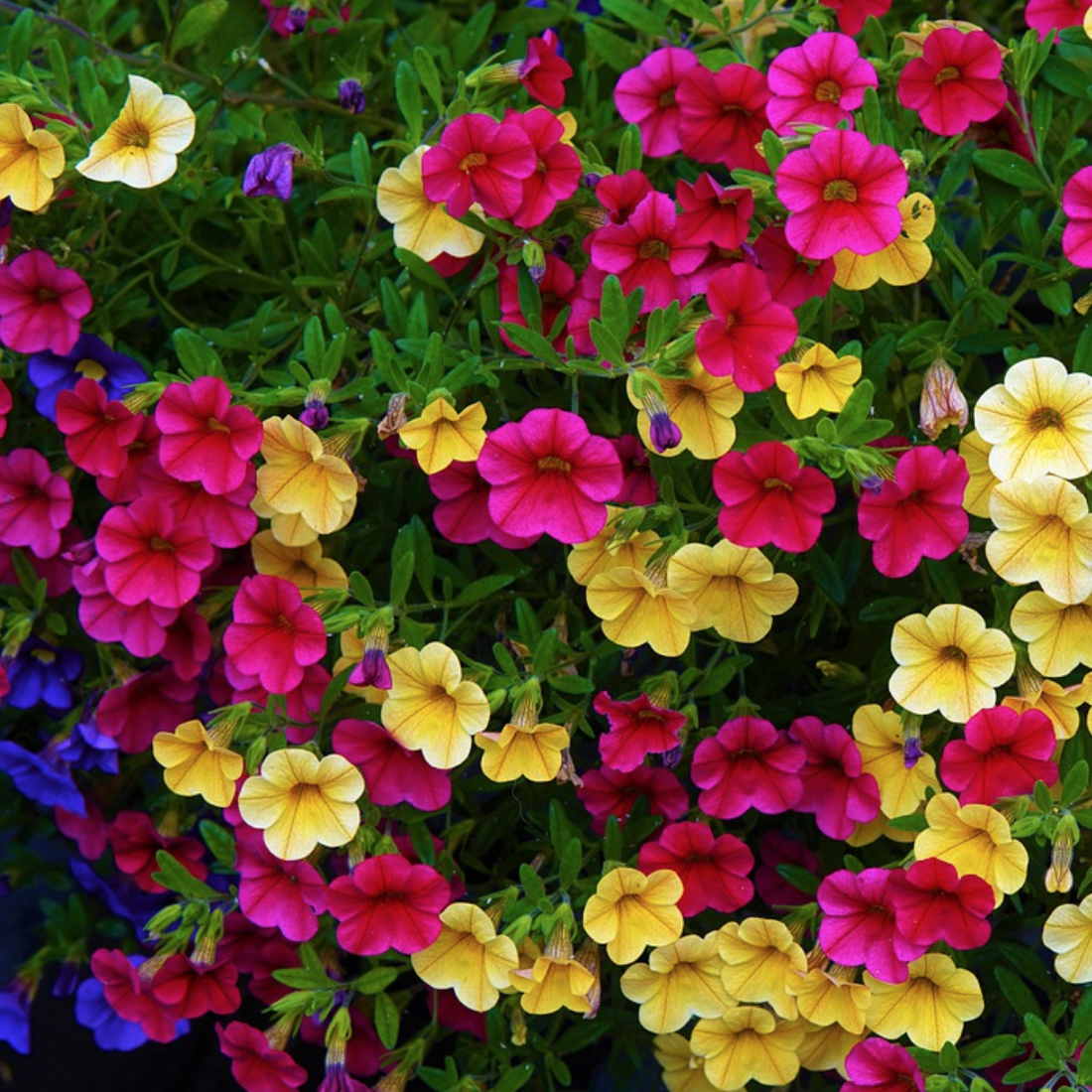
How To Grow Petunia From Seed
Share
Petunia flowers can be grown from seed sown early indoors and transplanted outside after frost, or from potted plants.
Sowing Seed Indoors:
- Sow Petunia Seeds indoors 8-10 weeks before last frost using a seed starting kit.
- Pre-wet the soil
- Sow seeds thinly and barely press into seed starting formula. Do not cover with soil.
- Cover the tray with plastic
- Keep the soil moist at 70-75 degrees.
- Seedlings emerge in 10-14 days.
- As soon as seedlings emerge, provide plenty of light on a sunny windowsill or grow seedlings 3-4 inches beneath fluorescent plant lights turned on 16 hours per day, off for 8 hours at night. Raise the lights as the plants grow taller. Incandescent bulbs will not work for this process because they will get too hot. Most plants require a dark period to grow, do not leave lights on for 24 hours.
- Thin to one seedling per cell when they have two sets of leaves.
- Seedlings do not need much fertilizer, feed when they are 3-4 weeks old using a starter solution (half strength of a complete indoor houseplant food) according to manufacturer’s directions.
- Transplant hardened-off seedlings to the garden after the frost.
- Before planting in the garden, seedling plants need to be “hardened off”. Accustom young plants to outdoor conditions by moving them to a sheltered place outside for a week. Be sure to protect them from wind and hot sun at first. If frost threatens at night, cover or bring containers indoors, then take them out again in the morning. This hardening off process toughens the plant’s cell structure and reduces transplant shock and scalding.
Planting Potted Plants in the Garden:
- Select a location in full sun with good rich moist, well-drained organic soil.
- Prepare the bed by turning the soil under to a depth of 8 inches. Level with a rake to remove clumps of grass and stones.
- Most plants respond well to soils amended with organic matter. Compost is a wonderful form of organic matter with a good balance of nutrients and an ideal pH level, it can be added to your planting area at any time. If compost is not available, top dress the soil after planting with 1-2 inches of organic mulch, which will begin to breakdown into compost. After the growing season, a soil test will indicate what soil amendments are needed for the following season.
- Plants should stand 6 to 12 inches apart in the garden.
- Dig a hole for each plant large enough to amply accommodate the root ball.
- Place the top of the root ball even with the level of the surrounding soil. Fill with soil to the top of the root ball.
- Press soil down firmly with your hand leaving a slight depression around the plant to hold water.
- Water thoroughly, so that a puddle forms in the saucer you have created. This settles the plants in, drives out air pockets and results in good root-to-soil contact.
- Use the plant tag as a location marker.
Petunia Care
- Keep weeds under control during the growing season. Weeds compete with plants for water, space and nutrients, so control them by either cultivating often or use a mulch to prevent their seeds from germinating.
- Mulches also help retain soil moisture and maintain even soil temperatures. For annuals an organic mulch of shredded leaves lends a natural look to the bed and will improve the soil as it breaks down in time. Always keep mulches off a plant’s stems to prevent possible rot.
- Keep plants well-watered during the growing season, especially during dry spells. Plants need about 1 inch of rain per week during the growing season. Use a rain gauge to check to see if you need to add water. It's best to water with a drip or trickle system that delivers water at low pressure at the soil level. If you water with overhead sprinklers, water early in the day so the foliage has time to dry off before evening, to minimize disease problems. Keep the soil moist but not saturated.
- Until plants become established, some protection from extreme winds and direct, hot sunlight may be necessary. Good air movement is also important.
- After new growth appears, a light fertilizer may be applied. Keep granular fertilizers away from the plant crown and foliage to avoid burn injury. Use low rates of a slow release fertilizer, as higher rates may encourage root rots.
- Remove spent flower spikes to encourage flowering and prevent seed development. Pinching the growing tips of plants can encourage bushiness.
- Monitor for pests and diseases. Check with your local Cooperative Extension Service for pest controls recommended for your area.
- Remove plants after they are killed by frost in fall to avoid disease issues the following year.
- Cut scraggly petunia plants back by half in late summer to spur growth and encourage new flowers to form.
- Petunias make beautiful edging plants and also can be combined with other summer-blooming annuals in mixed plantings. They are superb in containers of all sizes and types, either alone or combined with other flowers.
- Petunias attract hummingbirds and moths to the garden.


